Home »
Misc »
How to fix a basketball hoop base
How to fix a basketball hoop base
Portable Basketball Hoop Base Repair and Fix In 4 ways
Portable basketball hoops have earned fame for it’s simple transportation and height adjustment features. If you’re a proud owner of a portable hoop, you must hope that your hoop shall last for years to come. This can be true if you take proper care of it. This can turn out to be a pretty much good investment.
Any portable basketball hoop base is generally filled with water or sand. As your portable basketball system is always kept outside, there is every possibility of getting damaged. Exposure to the environment and element give rise to some problems. Some bases may crack or break.
By far, the most common problem people have is a rupture or crack in a plastic bottom. That means your hoop may not last as long as you have expected. But how to repair a broken portable basketball hoop base?
Table of Contents
- Alternative Solution
- Portable Basketball Hoop Base Repairing Methods
- Method 1: Using Caulk
- Things you’ll need:
- Steps:
- Pro Tips:
- Method 2: Using adhesive or resin
- Method 3: Using heat to patch up
- Materials and tools:
- The Process:
- Method 4: Use concrete
Alternative Solution
you can take a look at this PROBASE Steel Stand for portable basketball hoop.![]() Literally, it replaces any kind of portable hoop plastic base and secures basketball goal.
Literally, it replaces any kind of portable hoop plastic base and secures basketball goal.
If you wish, you can also take a look at some other useful basketball hoop accessories such as U-Turn Lift System Bracket, Anchor Kit, In-Ground Sleeve, or Deluxe Acrylic Ball Stand.
Now you might need to purchase the probase steel stand. Oh! Suddenly your sleep is disappeared. Because you're running on a tight budget?
So for now fixing the crack in your portable basketball goal base is probably the last thing going on your mind. Hang on; actually, this type of damage is not that difficult to repair. Without further ado, let’s find out the best possible ways to fix a broken portable basketball hoop base.
3 Things That Will Make Your Portable Hoop Secure
1. PROBASE Steel Stand for Portable Hoop
Get It On Amazon
2.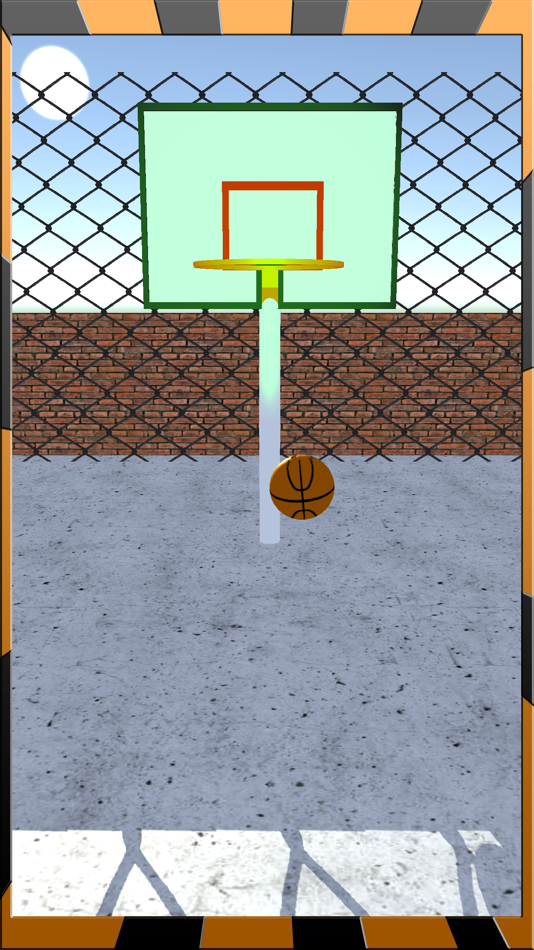 Spalding U-Turn Lift System Bracket
Spalding U-Turn Lift System Bracket
Get It On Amazon
3. BaseGel Basketball Goal Portable Bases Polymer
Get It On Amazon
Portable Basketball Hoop Base Repairing Methods
Method 1: Using Caulk
If you do have a 44’’ backboard size basketball hoop or smaller than that you can use fiberglass reinforced caulk to fix a broken or cracked base.
Things you’ll need:
1. Rapidly setting fiberglass reinforced caulk
2. Damp cloth
3. Rubbing alcohol
Steps:
1. At first, find out where the leaking or rupture is. Use your hands to press gently over the entire base. The objective of applying the pressure here is to locate if there is still anymore crack or not.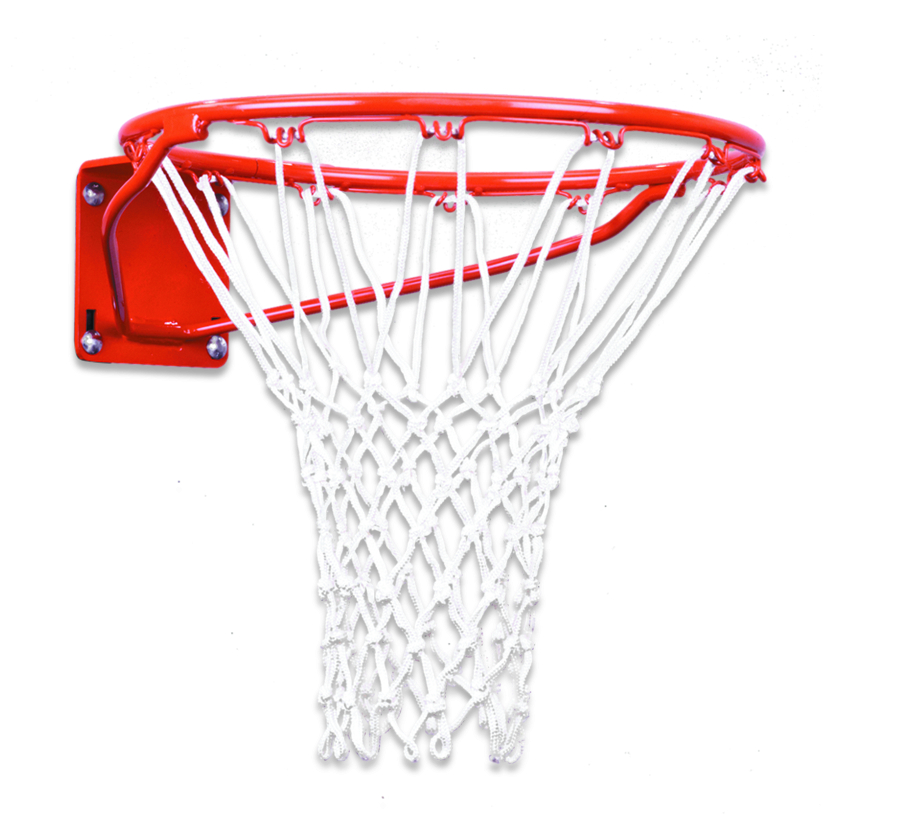 We hope you track down all the leaks.
We hope you track down all the leaks.
2. Now, you should drain the base of your portable basketball system. For that to happen, turn the base on it’s sideways and let the water or sand run out. You should only stop when it is at a level below the ruptured surface.
3. The surface should be free of any kinds of debris and sand particles. That’s why you need to clean the rupture using a damp cloth and a small proportionate of rubbing alcohol. Make sure there is no moisture on it’s surface. Let the surface dry completely.
4. Now fill the rupture or crack with caulk. Compress the base firmly into the crevice. You need to keep this on your mind that you should cover all the edges. Therefore you have to collect enough caulk. After that press the caulk even and straighten the edges.
5. After an hour, you can smoothly sand the caulk. Make sure you do it with soft hands.
6. Want to hide the repaired spot from others? Use paint colors.
Pro Tips:
1. Use a clean cloth.
2. Before pouring caulk make sure there are not any moisture or sands in the leakage. If it is, the seal may not hold that well.
3. For precautionary measures cover the edges of rupture plus 1 to 2.5 inches.
Method 2: Using adhesive or resin
You can use adhesive or resin to fix a broken hoop base. Adhesives or resins provide superior bonding capabilities, but this is sad to hear that no strong adhesive can be used with fiberglass cloth to build a solid patch over a crack.
Just imagine your hoop has got a crack. It is laid down on the ground. Now probably you are not so sure if you are gonna buy a new one or not. So there is nothing to lose in trying some of the new adhesives on the market.
Here is the way through which you can get the best results. First, sand the base surface to create a texture and then flame the base in the crack spot to fix it. Let me tell you about the heating process. Pass the torch or open flame back and forth over the base surface.
Let me tell you about the heating process. Pass the torch or open flame back and forth over the base surface.
Keep the heat moving all the time before the polyethylene shows any kind of sign of melting. After you’re done with the heating process, you can continue to repair for a short period of time. This will help you to get the ideal result.
Steps:
1. Plate a layer of adhesive or resin on the interior of the base over the crack. Then extend it about 1’’ beyond the edges of the break.
2. Cut a piece of fiberglass material and join into the glue or resin. Resin which you have just placed on the base- clear casting resin with catalyst 32 ounce.
3. Roll a layer of glue over the patch cloth to lay the second patch on top of the first. Thus it will help the edges to overlap the first layer by around an inch.
4. Until you see your base is really stiff between repaired and unrepaired area, you should continue adding the layers.
5. Patch layers should be placed over the interior of the base.
6. On the exterior, directly drip the patch over the top of the cracked surface and for about ¼ beyond each end of that area. You should repeat that too on the opposite side and sand those spots until you notice they are fair to the base. These patch layers are meant to build for encountering sandbars or other interferences on the water.
Method 3: Using heat to patch up
People will say this is the hardest option but worth spending the time. That’s why this process is regarded as the best move to fix a broken portable basketball hoop base. Polyethylene can be easily manufactured (like distend, bend, distort, deflect). After you have filled the holes with it from the melted patch, pour water on the patch to cure it.
Materials and tools:
1. Polyethylene can flex and distort quickly. Find a material as elastic as polyethylene.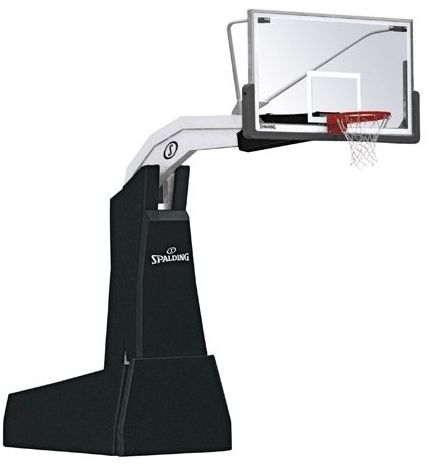 For e.g barrels.
For e.g barrels.
2. Gloves are mandatory
3. Blow torch or heat gun
4. Water bottle for safety reasons
5. Large metal spoons or putty knife
6. A pair of pliers
The Process:
You need to flame the patch by consistently moving blow torch or heat gun over it. Simply can’t allow the heat gun to stay over it more than 5 seconds. If you do so, you will burn it.
You should check the patch immediately after holding the heat gun over it for few seconds. When you see there are signs of melting, spread the fluid into the holes so that the patch can attach to the impaired spot.
1. Put on hand gloves.
2. Then ignite the torch/power the heat gun.
3. Have your patch at a side with pliers.
4. After that, melt the patch and make it hanging downwards.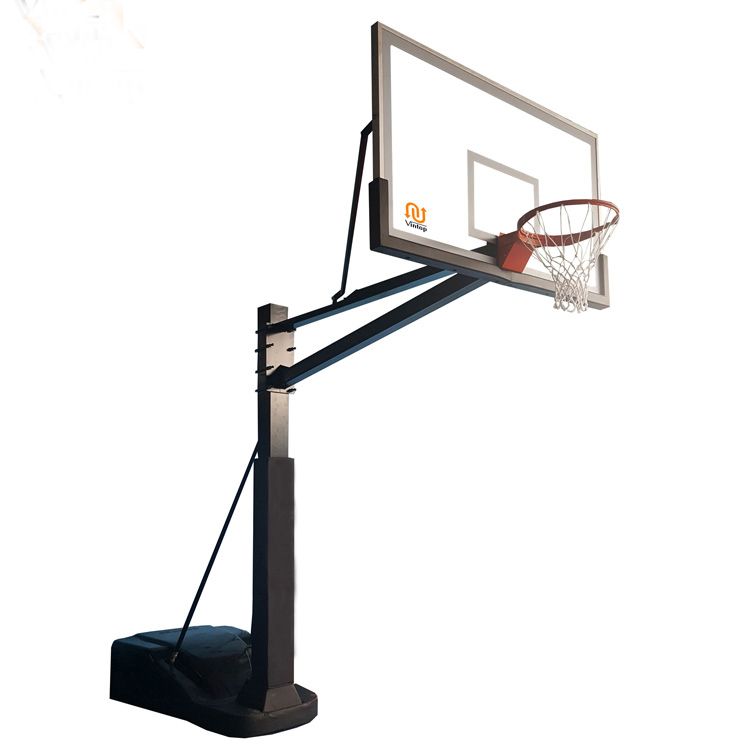 Make sure you do not cause a hole in it.
Make sure you do not cause a hole in it.
5. The plastic needs to turn into a different color. So, you should sweep the torch all over the outer edges of the hole.
6. Strike the iron while it is hot! Yes, both the patch and base must remain hot while processing. So, you need to do it very fast.
7. Hold the patch and press it to the hoop. Make sure you have gloves wearing on your hand. It can still get a bit hot.
Method 4: Use concrete
If anybody asks you the simplest way of a broken basketball hoop base repairing, then answer him the concrete straightforwardly. You can fill or patch it from the inside with concrete almost effortlessly. That is really an uncomplicated, permanent, and cheaper solution to your problem.
Concrete is a high quality patching material that hardly has any tendency to leak. Nothing to worry about freezing. If you want you can even put the concrete mix in without adding any water.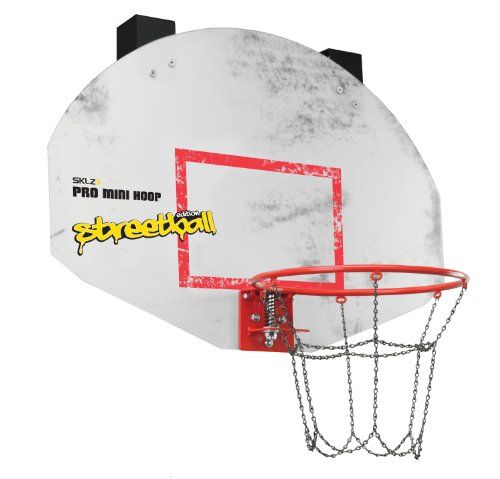 Then pour the water, slosh it back and forth.
Then pour the water, slosh it back and forth.
Articles you would love to read:
4 Simple Ways to Repair Cracked Basketball Hoop Base
Every portable basketball hoop owner hopes that his hoop can last for years. And it really would be like that – if the people would take care of it.
But life happens and fixing a crack in a portable basketball hoop base is sometimes the last thing on your mind.
I’ve had experience with this when I got stupid after a few days of not sleeping. What happened is that I cut around the base of a portable basketball system discharge side. I gave a really nice slice in it when my tire got stuck on the edge of the garden (it’s a big hump) and went right into the corner of the base.
In short, to repair a basketball base directly drip the patch over the top of the cracked surface and for about ¼ beyond each end of that area. Repeat that on the opposite side and lightly sand those spots until they are fair to the base.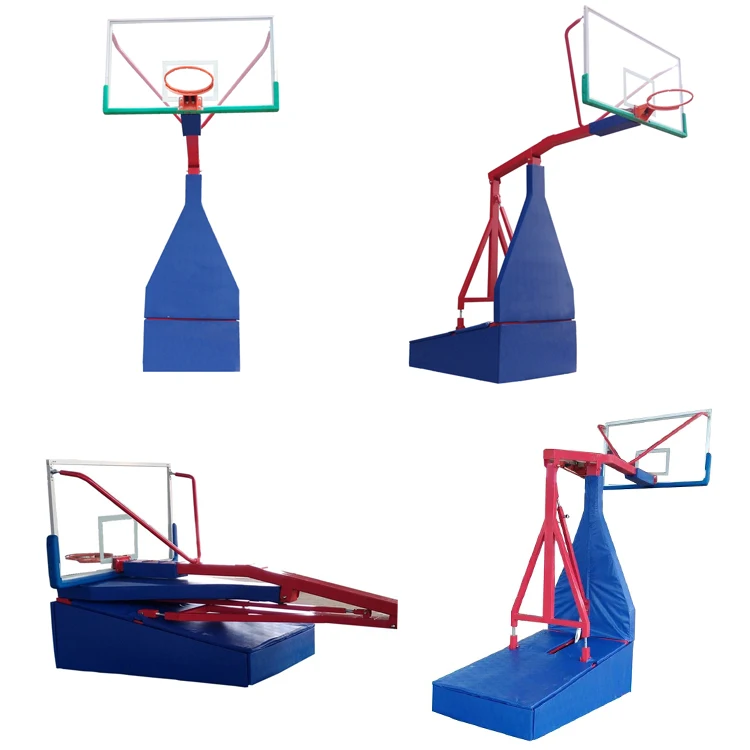
Most bases today are made out of high-density polyethylene. It’s the plastic that should be flexible enough to expand with the water when it freezes, but as you can see for yourself – sometimes isn’t.
One of the things that’s most certain about polyethylene is that is quite difficult to fix. Fortunately, it’s a material that usually needs no repair and can last a long time, but there will be times.
A structural repair on polyethylene can be tricky to perform if the crack is extensive, but it’s doable. Without further ado, we’ll now go over the four best ways to fix a broken portable basketball hoop base. Get to work!
1. Use adhesive or resin
Sadly, no strong adhesive can be used in conjunction with fiberglass cloth to build a solid patch over a crack. Adhesives are making such claims, but results are still not reliable.
However, if your hoop is laid down due to such a crack and you don’t even think to replace it, there’s not much to lose in trying some of the new adhesives on the market.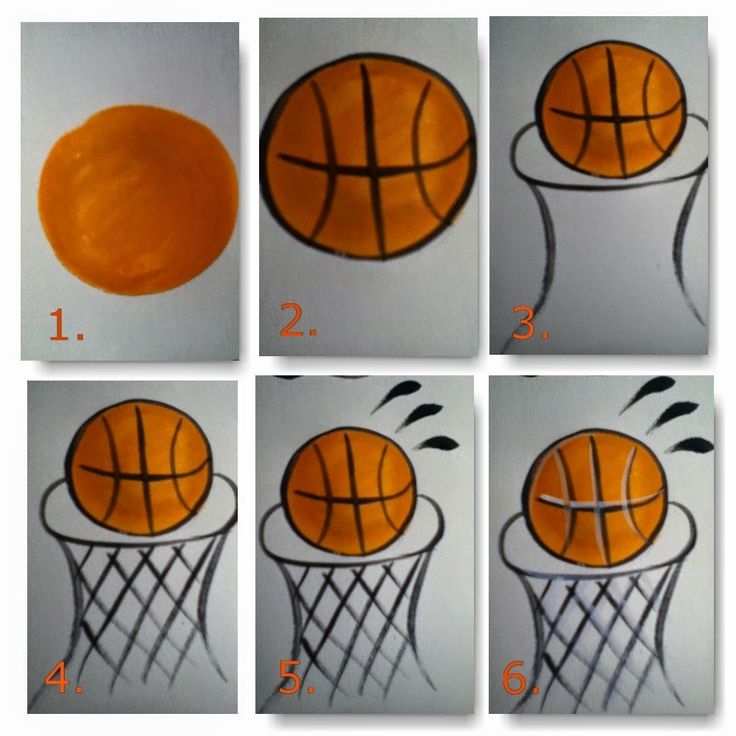 For instance, I was surprised at how effective was this epoxy resin coating for wood in combo with a simple cloth.
For instance, I was surprised at how effective was this epoxy resin coating for wood in combo with a simple cloth.
Enhanced results regarding getting adhesion between patch and basketball hoop base are achieved by first sanding the base surface to create a texture and then “flaming” the base in the crack spot to repair it.
Heating consists of passing a torch or open flame back and forth over the base surface, keeping the heat moving at all times and moving it before the polyethylene shows any sign of melting. For best results, continue with the repair shortly after heating the surface.
The process
1. The patching method consists of plating a layer of adhesive or resin on the interior of the base over the crack and extending about 1” beyond the edges of the break.
2. Then take a cut to fit a piece of fiberglass material and attach it into the glue or resin you just placed on the base. Clear Casting Resin With Catalyst will do the work.
3. Spread a layer of glue over the patch cloth and lay the second patch on top of the first, making possible for the edges to overlap the first layer by around an inch.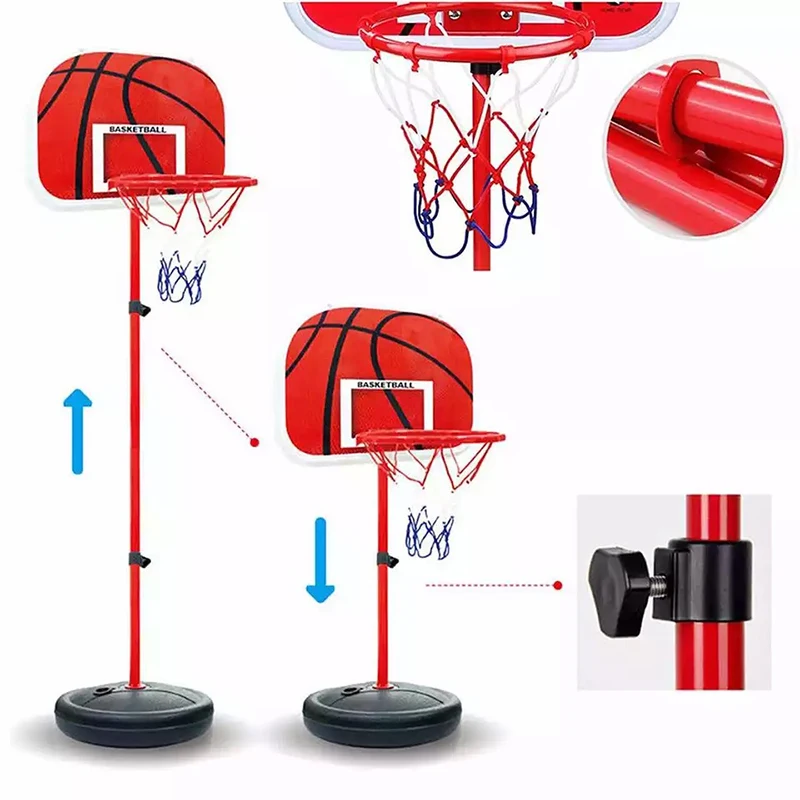
4. Repeat the third step to make it safer.
5. Continue adding layers until the base is consistently stiff between repaired area and unrepaired area.
6. Place all patch layers on the interior of the base, and the exterior of the crack should be coated by the polyethylene drip method described earlier. Putting patch layers on the base surface is just asking for them to be peeled off by encountering sandbars, sandbars or other interferences on the water.
2. Use heat to patch it up (the best move)
This is truly the hardest option, but it’s definitely worth it. Start off by getting assistance as you have to move very fast. Fix your workspace so that everything is easy to reach.
Polyethylene can distend, bend, distort, deflect, etc., very quickly (actually, it’s one of the reasons for its durability), absorbing the impact by flexing away from it.
I use Seekone heavy duty hot air gun all the time for this kind of work.
Once you have filled the holes with it from the melted patch, pour water on the patch to cure it.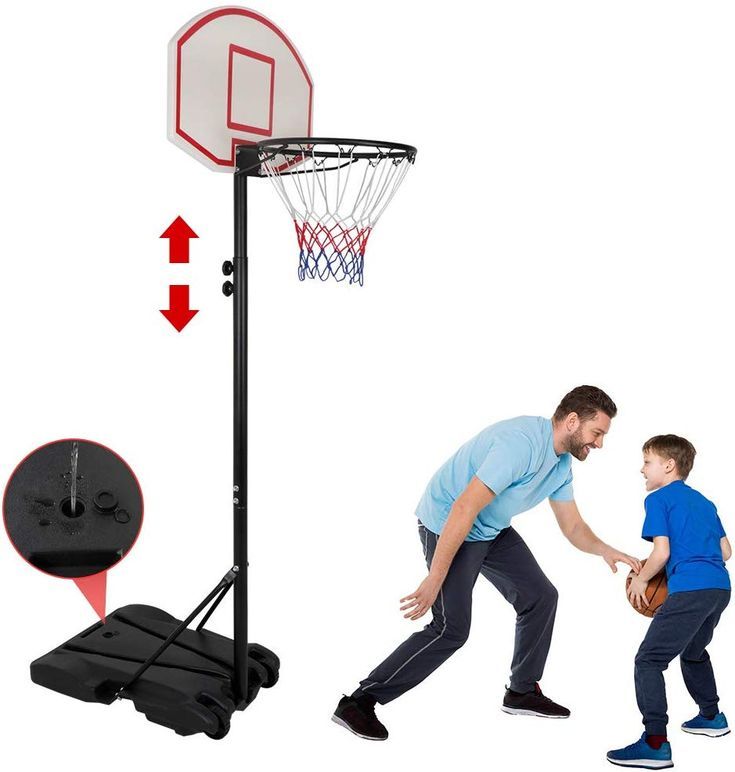
The material and tools
Some sort of patch
We had an old trashed base we could cut up. The only other material I know that will hold well are those big 50-gallon barrels. Make sure you wash it out well! The goal is to find material as elastic as the polyethylene so that it can flex and distort equally and not move from the base.
Gloves
This is mandatory. If you don’t have any, get it on Amazon.
Heat gun or blow torch
Using a blow torch isn’t great but works.
A water bottle
Safety first, don’t set anything on fire.
Large metal spoon or putty knife
A pair of pliers
The process
Begin flaming the patch by consistently moving blow torch or heat gun over it. If you hold the heat gun over it for more than 6-7 seconds, you will burn it.
Hold it over the patch for a few seconds, then check the patch. When it begins to melt, spread the fluid out towards the pilot holes. You must force the liquid poly into the holes so the patch will attach to the damaged area.
You must force the liquid poly into the holes so the patch will attach to the damaged area.
1. Put on the gloves
2. Ignite the torch or power the heat gun
3. Keep the patch at a corner with the pliers
4. Melt the patch to the extent that it is droopy but watch out not to burn a hole in it. It’s easy to do it with a torch. A little challenging to do with the gun. I use slow extensive motions across the patch area.
5. Sweep the torch all over the outer edges of the hole enough so that the plastic starts to turn a different color. For example, my base turned green.
6. You have to work so fast, while both the patch and the base are still hot. The hoop base needs to be pretty sticky. You’ll have to hold the patch and press it to the hoop. Even with gloves on it can get a bit hot!
3. Use fiberglass-reinforced caulk or sealant (easiest option)
Stuff You’ll Need:
• Quick-setting fiberglass-reinforced caulk or sealant
• Damp cloth
1. Locate the leaking or rupture. Go over the entire base, pressing smoothly with your hand. Look to see a crack or break when pressure is used. Make sure you find all the leaks.
Go over the entire base, pressing smoothly with your hand. Look to see a crack or break when pressure is used. Make sure you find all the leaks.
2. Drain the base of your portable basketball system, whether it’s Spalding or Lifetime. Turn it sideways and let the sand or water run out until it is at a level below the cracked surface.
3. Wipe it with a damp cloth and a small amount of rubbing alcohol. Make sure the surface is free of any debris, sand particles, and moisture. Allow the rupture to dry completely.
4. Fill the crack with caulk. Press and knead it firmly into the crevice. You should use enough caulk to cover the edges plus 1 to 2 inches. Press the caulk even and straighten the edges.
5. Wait an hour, then smoothly sand the caulk. A coat of paint can help hide the fixed spot.
Tips & Warnings
• If you move your basketball hoop often, think to find a more permanent place for it and leaving it there.
• If moisture or sand is in the rupture before you apply the caulk, the seal will not hold.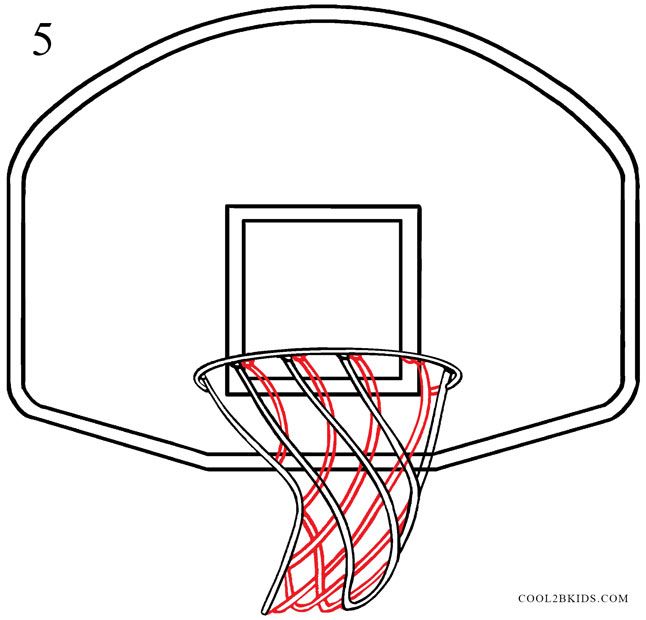
4. Concrete, silicone, and alternatives
Do you want to know what the simplest solution for all this is? It’s to fill it or patch it from the inside with concrete. It’s a good patching material, has no tendency to leak, it’s permanent, and you won’t have to worry about freezing.
And an 80-pound bag of concrete (95-105 pounds when hydrated) is cheaper than anything. You can even put the concrete mix in without adding water, then pour the water in, slosh it back and forth and forget about it.
Some could argue that you shouldn’t use concrete because then you couldn’t move the hoop easily. It’s a valid argument, but have you ever tried to move one of these things with 100lbs of water sloshing around on the inside?
How I unsuccessfully tried to eliminate the basketball backboard under my windows
N beginning
The story began in May 2013. Then I applied with a request to dismantle the basketball backboard installed on the site between buildings 39 and 43 along Nauki Avenue in the immediate vicinity of the residential building. In the early fall of 2012, some sports equipment appeared here: parallel bars, a crossbar, something else, the name of which I do not know, as well as the aforementioned basketball backboard. The negative properties of this shield manifested themselves in the spring of 2013 - they began to hit it with a ball, and since the shield is metal, the blows to it are heard between the houses, like hammer blows. In writing, this can be depicted as: boom-m! boom! boom! The space inside the quarter is closed, the echo spreads the sound of impacts, and the sound wave from the previous impact does not have time to fade, as the next one is already happening, therefore, due to the interference of sound waves, the total sound, taking into account reverberation, is quite impressive. Moreover, since the nights are white, the most inveterate lovers make “boom-boom” until one in the morning or more. And all this is 10 meters from the wall of a residential building. The police on the statements of citizens about the violation of silence after 23 h.
In the early fall of 2012, some sports equipment appeared here: parallel bars, a crossbar, something else, the name of which I do not know, as well as the aforementioned basketball backboard. The negative properties of this shield manifested themselves in the spring of 2013 - they began to hit it with a ball, and since the shield is metal, the blows to it are heard between the houses, like hammer blows. In writing, this can be depicted as: boom-m! boom! boom! The space inside the quarter is closed, the echo spreads the sound of impacts, and the sound wave from the previous impact does not have time to fade, as the next one is already happening, therefore, due to the interference of sound waves, the total sound, taking into account reverberation, is quite impressive. Moreover, since the nights are white, the most inveterate lovers make “boom-boom” until one in the morning or more. And all this is 10 meters from the wall of a residential building. The police on the statements of citizens about the violation of silence after 23 h. didn't react. They promised to come, but they didn't.
didn't react. They promised to come, but they didn't.
Therefore, I wrote a letter to the administration of the Kalininsky district. June 3, 2013 received the first response. Deputy Head Mikhail Ivanovich Titov informed me that on May 24, 2013, an off-site meeting of the department of improvement and ecology was held together with representatives of the Ministry of Defense of the Moscow Region Grazhdanka and CJSC Dixy-Petersburg. It was established: 1) the land plot on which the shield stands is generally “not assigned to sports and health-improving institutions subordinate to the district administration”; 2) “the equipment located on the site was installed by Edvois LLC (Moscow) by order of the Dixy chain of stores as part of a charity event”; 3) this equipment is not on the balance sheet of the municipality and cannot be supported by the budget of the MO Citizen; 4) it was decided to “request the necessary documentation in Moscow from CJSC Dixy-Petersburg”.
So, it turned out that the area between the houses, which is under the jurisdiction of the administration of the Kalininsky district, was not planned by the district as a sports area, but was made such by the Dixy store.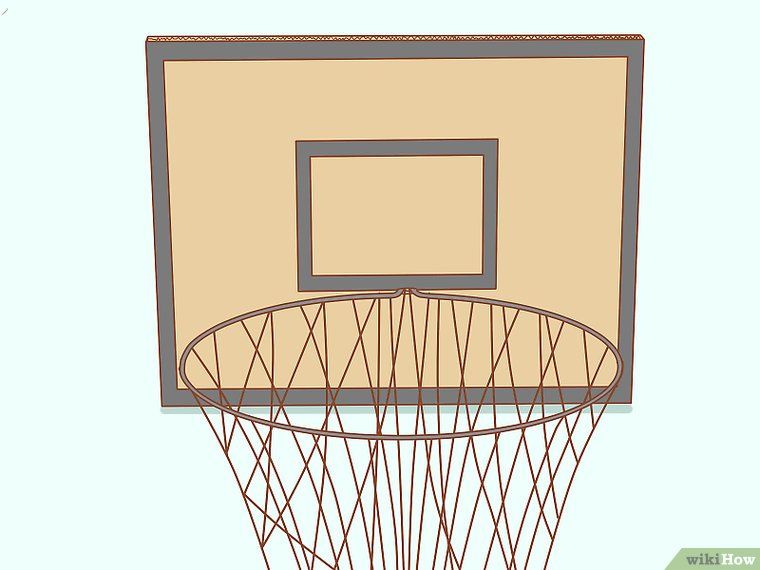 It would seem that everything is clear: oblige the store to remove the basketball backboard and close the topic with that. But no, it's too easy. Therefore, for some reason they write to me that the shield is not on the balance sheet of the MO MO (municipal formation of the municipal district), as if I asked to maintain this shield. And in the end they decide to ask CJSC "Dixie-Petersburg", but not in St. Petersburg, but in Moscow - so that the letters go as long as possible, and during this time everyone, including me, forgot about the shield. After all, how do they imagine complainers on such occasions: well, I wrote a letter, I was dissatisfied at that moment, then I received an answer from officials - and I’m already satisfied.
It would seem that everything is clear: oblige the store to remove the basketball backboard and close the topic with that. But no, it's too easy. Therefore, for some reason they write to me that the shield is not on the balance sheet of the MO MO (municipal formation of the municipal district), as if I asked to maintain this shield. And in the end they decide to ask CJSC "Dixie-Petersburg", but not in St. Petersburg, but in Moscow - so that the letters go as long as possible, and during this time everyone, including me, forgot about the shield. After all, how do they imagine complainers on such occasions: well, I wrote a letter, I was dissatisfied at that moment, then I received an answer from officials - and I’m already satisfied.
Who to drink?
Maybe I would have forgotten, but "boom-boom" did not work. And after all the deadlines for a meaningful response had passed, I wrote a second letter to the administration of the Kalininsky district. He asked if a reply had been received from Moscow, and at the same time said that he had talked with Mr.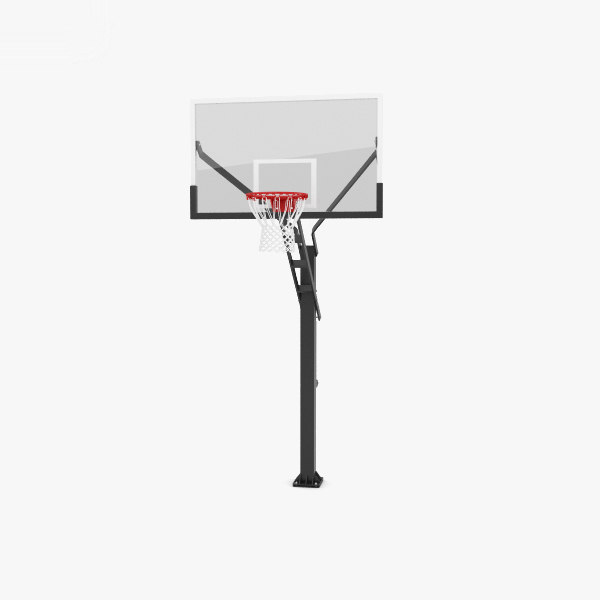 Fire, the head of the local administration of the MO Citizen, in the summer. The office of this imposing gentleman is located just next to my house. I approached him - and he likes to go out on the porch of his office and look at the citizens passing by, living on the territory of the MO MO Citizen - and I say: remove this shield, finally! At night, hitting the ball does not let you sleep! A.N. Fire explained that the site was not planned as a sports ground, the shield was not supposed to be here at all, and the MO MO did not put up a shield. And he offered me to cut down this shield myself.
Fire, the head of the local administration of the MO Citizen, in the summer. The office of this imposing gentleman is located just next to my house. I approached him - and he likes to go out on the porch of his office and look at the citizens passing by, living on the territory of the MO MO Citizen - and I say: remove this shield, finally! At night, hitting the ball does not let you sleep! A.N. Fire explained that the site was not planned as a sports ground, the shield was not supposed to be here at all, and the MO MO did not put up a shield. And he offered me to cut down this shield myself.
I stated all this in my second letter to the district administration in November 2013, proposing to cut down the shield to Messrs. Fire and Titov.
On November 19, I received a copy of M.I. Titov, which he sent to the head of the Ministry of Defense of the Ministry of Defense, citizen N.A. Vaitsekhovich. In a letter, on the basis of the law of St. Petersburg No. 420-79 "On the organization of local self-government in St.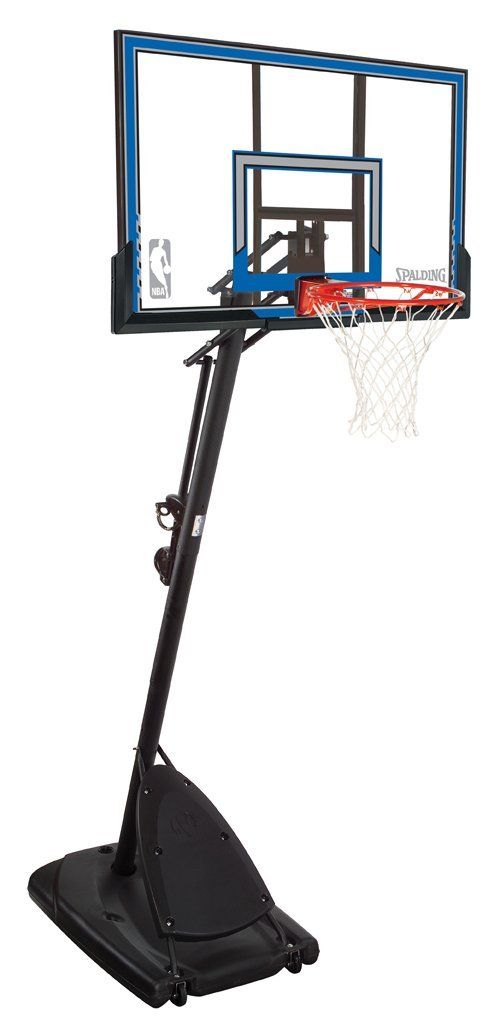 Petersburg", Titov asked to consider my appeal and inform me of the results.
Petersburg", Titov asked to consider my appeal and inform me of the results.
And on November 21, 2013, Mr. Fire wrote me a letter. Repeating Titov's answer of June 3, 2013 (put "Dixie", not on the balance sheet ...), Fire concluded: "We consider it inexpedient to dismantle the equipment." No motivations were given, while there was no mention of the arbitrariness of Dixy's actions. It was obvious that he was reluctant to deal with my question in the MoD. And even to give any arguments laziness.
Complex playground
And then winter had already come, the windows were no longer wide open, and besides, no one had hammered into the shield. And the next spring, that is, May 26, 2014, I again disturbed M.I. Titov by written appeal. In response to his letter of 11/19/2013 and the letter of A.N. Fire dated 11/21/2013, I wrote that I was not at all interested in the balance holder and did not ask to keep the basketball backboard. And most importantly, I stressed, the conclusion about the inexpediency of dismantling contradicts paragraph 2.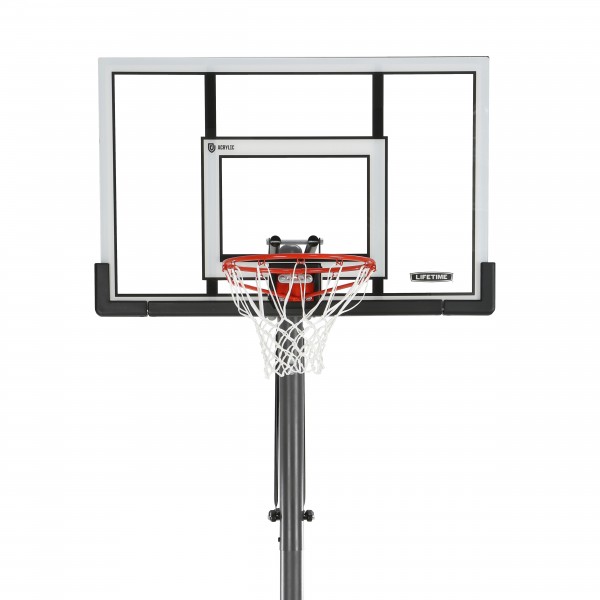 12.3 of the order of the Ministry of Regional Development of the Russian Federation dated December 27, 2011 No. 613 “On Approval of Methodological Recommendations for the Development of Norms and Rules for the Improvement of the Territories of Municipalities”.
12.3 of the order of the Ministry of Regional Development of the Russian Federation dated December 27, 2011 No. 613 “On Approval of Methodological Recommendations for the Development of Norms and Rules for the Improvement of the Territories of Municipalities”.
According to this paragraph, ““the distance from the windows of residential buildings and public buildings to the boundaries of playgrounds for preschool age is recommended to be at least 10 m, for primary and secondary school age - at least 20 m, for complex playgrounds - at least 40 m, sports - play complexes - at least 100 m. Playgrounds for preschool and pre-school age are recommended to be placed on a residential building site, playgrounds for primary and secondary school age, complex playgrounds are recommended to be placed on green areas of a group or microdistrict, sports and gaming complexes and places for skating - in the parks of a residential area.
I assumed that there is a complex playground near my house, ie.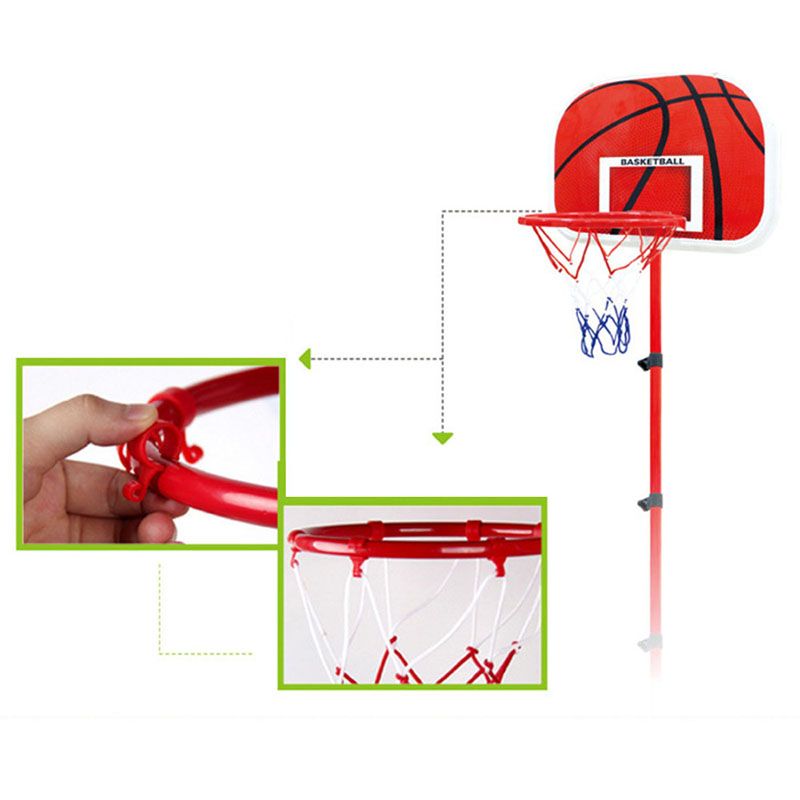 the distance from the windows of the house to it should be at least 40 m, while in reality from the windows of the house to the edge of the site 15 m, and to the shield - 16 m.
the distance from the windows of the house to it should be at least 40 m, while in reality from the windows of the house to the edge of the site 15 m, and to the shield - 16 m.
“The distance between houses 39 and 43 is less than 70 m, therefore, at any location of the basketball backboard, the distance from the windows of residential buildings to it, especially to the border of the complex playground, will certainly be less than 40 m. With this in mind and in pursuance of the order of the Ministry of Regional Development of the Russian Federation, I demand to dismantle the illegally installed basketball backboard. Moreover, it was arbitrarily installed by Edvois LLC (Moscow) by order of the Dixy store.
The main thing is correspondence
To my letter to M.I. Titov wrote a response dated June 24, 2014. Again, a representative commission was assembled: employees of the district administration, representatives of the MA MO Grazhdanka, CJSC Dixy Yug, LLC Zhilkomservis No.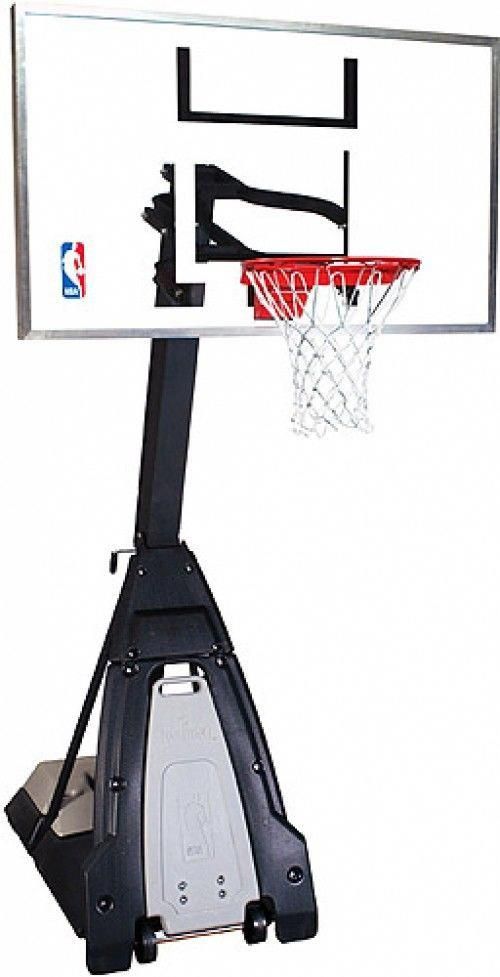 2 of the Kalininsky District. On June 19, the commission conducted a commission survey of the site. Now it suddenly turned out that the site is a sports ground (although a year before Titov wrote to me that it was not planned as a sports ground), there are: a parallel bars simulator, a horizontal bar, balance training equipment, a basketball stand with a backboard and an urn. Further, I was pleased with the message that all equipment, including the rubber coating of the site itself, "is in proper technical condition." As if I complained about the poor condition and asked to urgently repair the shield!
2 of the Kalininsky District. On June 19, the commission conducted a commission survey of the site. Now it suddenly turned out that the site is a sports ground (although a year before Titov wrote to me that it was not planned as a sports ground), there are: a parallel bars simulator, a horizontal bar, balance training equipment, a basketball stand with a backboard and an urn. Further, I was pleased with the message that all equipment, including the rubber coating of the site itself, "is in proper technical condition." As if I complained about the poor condition and asked to urgently repair the shield!
But here is the answer to my question: “The distance from the windows of residential buildings to the territory of the sports ground meets the requirements of paragraph 2.12.12 of the Guidelines <…> In connection with the above, a commission decision was made that there were no grounds for dismantling the basketball stand with the backboard ".
Let's pay attention: I referred to paragraph 2.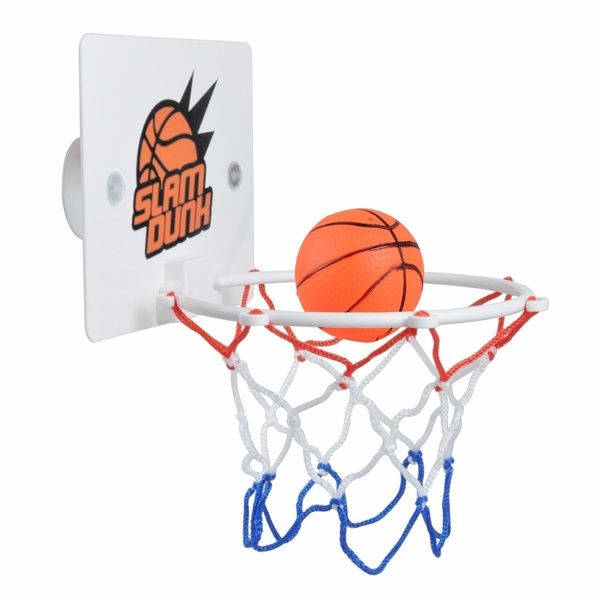 12.3, Titov - to paragraph 2.12.12.
12.3, Titov - to paragraph 2.12.12.
But this item does not apply to my case at all! Since paragraph 2.12.12 refers to the sports core on the territory of schools, and the area between the houses on which the basketball backboard stands is not the territory of the school at all.
But even if it were the territory of the school, then in this case we would have a clear violation: from the boundaries of the sports ground to the windows of residential buildings, the distance is 15 m, and paragraph 2.12.12 says about 20-40 m, depending on noise characteristics. “Boom-boom” day and night is quite an obvious noise characteristic that allows you to demand 40 m. The bureaucratic machine is aimed not at solving a question, even the most trifling one, but at the correspondence itself. I am writing about clause 2.12.3 - they answer me with reference to clause 2.12.12. The main thing is to give some kind of answer within the time specified in the law, which will give rise to my next statement, they will again give a stupid answer - and so on ad infinitum. Their job is correspondence with applicants, not actions.
Their job is correspondence with applicants, not actions.
The appearance of the police
Since the administration of the Kalininsky district is running a fool, I turned to the governor. He explained everything, whom he should have caught, asked to stop.
Sent from the site on June 26, but the application was registered only on July 2, 2014 (No. 27737/13-2-0). It took a week to register the application sent by e-mail, as if the letter was crawling in a paper envelope.
July 8, 2014 I receive a response from the Office of Appeals and Complaints of the Governor's Administration signed by the head of the department L.V. Khristenko. I am promptly informed that, in accordance with such and such a law, my appeal is sent to the affiliation ... to the Ministry of Internal Affairs for the Krasnoselsky district.
Firstly, I live in the Kalininsky district, which I pointed out in my letter to the governor, and secondly, what does the police have to do with it if I write about violating the order of the Ministry of Regional Development? Or was it meant that a police post would be put up near the unbearable basketball backboard to prevent the ball from being thrown?
I call the department and find out that the answer was written by Danielyan Ashot Sergeevich. Specialist of the 1st category of the urban sector of the Department for Considering Complaints, Letters and Appeals of Citizens of the Office for Appeals and Complaints of the Administration of the Governor of St. Petersburg. Apparently, he didn’t care at all who to shove my statement on, the main thing was to do it quickly. Under socialism, there was such a thing - psychotechnics.
Specialist of the 1st category of the urban sector of the Department for Considering Complaints, Letters and Appeals of Citizens of the Office for Appeals and Complaints of the Administration of the Governor of St. Petersburg. Apparently, he didn’t care at all who to shove my statement on, the main thing was to do it quickly. Under socialism, there was such a thing - psychotechnics.
Maybe Danielyan wanted to scare me with the police?
So, I call the Department of Appeals and Complaints, find out the name of the employee who prepared the answer to me, and I say that Mr. Danielyan missed the mark with the district, and that was not at all what I expected from the governor, complaining to him about his unwillingness to deal with my statement to the administration of the Kalininsky district. Please explain all this to Danielyan...
However, a week later I receive the same letter, only now it contains the Department of the Ministry of Internal Affairs for the Kalininsky District.
After that, the district police officer A.E. Klementiev and comes to my house to "identify" and "take an explanation." I barely have time to hang a portrait of Putin on the wall. First I show the district police officer my identity, then my passport, I explain everything, the district police officer listens, writes down, draws up a paper, I put my signature in two places ... The district policeman’s basketball backboard is not interested, I, in general, too. You have to unsubscribe.
The bureaucratic machine is working, albeit in vain, the papers are multiplying one after another, the officials are corresponding, working off their salaries, the basketball backboard is standing, the “boom-boom” continues ... By the way, the district police officer said that he would forward my application to the land use department. And it is right.
The paper should circulate, not lie still, because officials - in the MO MO, in the district administration, in the Office of Complaints of the Governor's Administration - have to work. And their job is paperwork. And they need my application as something that allows them to produce and drive papers with outgoing numbers in a circle.
And their job is paperwork. And they need my application as something that allows them to produce and drive papers with outgoing numbers in a circle.
Mikhail ZOLOTONOSOV, photo nlr.ru
How to equip a basketball court in the country or in the yard
Basketball develops the child's physical abilities - coordination, endurance, develops strong-willed qualities, concentration, attentiveness and teaches non-standard thinking. Professionals recommend sending a child to the basketball section from the age of 8-9, but outside the city or in the yard, you can “chase the ball” from an early age.
I myself equipped a basketball court in my country house and now I am ready to share the secrets of its arrangement. I'll tell you what you need to do, how to choose the right equipment and how to care for it.
Prepare basketball court surface
To create a basketball court in accordance with all the rules, you need to select a flat horizontal surface for it and fill it with concrete.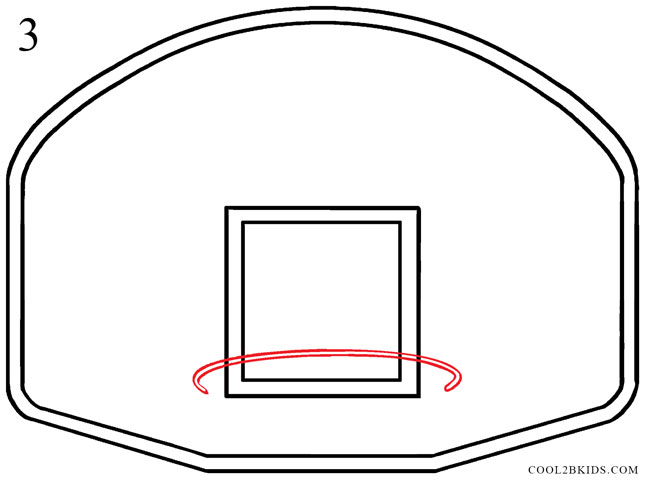 After that, I recommend applying a special rubber coating, like on playgrounds in the yard. There is a more expensive coating option - from rubber.
After that, I recommend applying a special rubber coating, like on playgrounds in the yard. There is a more expensive coating option - from rubber.
The coating will provide cushioning - the ball will bounce well.
If it is not possible to organize a special platform, you can simply place a rack or hanging basket on a dirt surface. In this case, the ball bounce will not be so strong. An important requirement for safety: the surface must be flat, without holes and bumps.
The dimensions of the site depend on the features of your yard or plot in the country. A full-fledged basketball court has dimensions of 28 × 15 meters. However, not everyone has the opportunity to build such a site in the country.
It is necessary to take into account the technical features of the game. The three-point line in basketball is 6.75 meters from the hoop. Therefore, it is necessary that the size of the site be at least 10 × 13 meters. If you are not going to train three-point shots, a 5 × 5 meter court will do.
Mark out
The second step is to mark up. It is important to use paints of contrasting colors. It is better to buy paints with a high content of rubber or polymer.
If you are equipping a basketball court for children, make the markings bright so that they cheer you up and attract attention. For the game of teenagers and adults, it is better to immediately apply technically correct markings.
Place a small fence or protective net on the site. Thanks to them, you do not have to constantly run after the ball to the other end of the site.
Buy stand or backboard
It is difficult to answer the question of what is better - a basketball stand or a backboard. It all depends on taste, tasks and opportunities. Each of these types of equipment has its pros and cons.
There are two types of racks: mobile and static. The static one is mounted in the ground.
The base of the mobile rack is filled with sand or water - for stability. The main advantage of a mobile rack is that it can be moved from place to place. This is convenient when there is no dedicated basketball court or if you are going to play other games in this area, such as tennis or football.
The main advantage of a mobile rack is that it can be moved from place to place. This is convenient when there is no dedicated basketball court or if you are going to play other games in this area, such as tennis or football.
The main requirement for racks is their stability. It will be much more comfortable and safer to play if you are sure that the stance will withstand a blow of any force.
Pay attention to the materials from which the racks are made. A static rack will be outdoors throughout the year, which means it must be made of reliable materials. It is better to buy racks from well-known manufacturers. So, the American companies Spalding or Royal Fitness guarantee high quality, durability and safety.
Basketball backboards can be made in the country with your own hands from a board, chipboard or plywood remnants. If this option does not suit you, you can purchase semi-professional or professional options in stores.
There are four types of materials from which the shield surface is made: composite, polycarbonate, acrylic and tempered glass.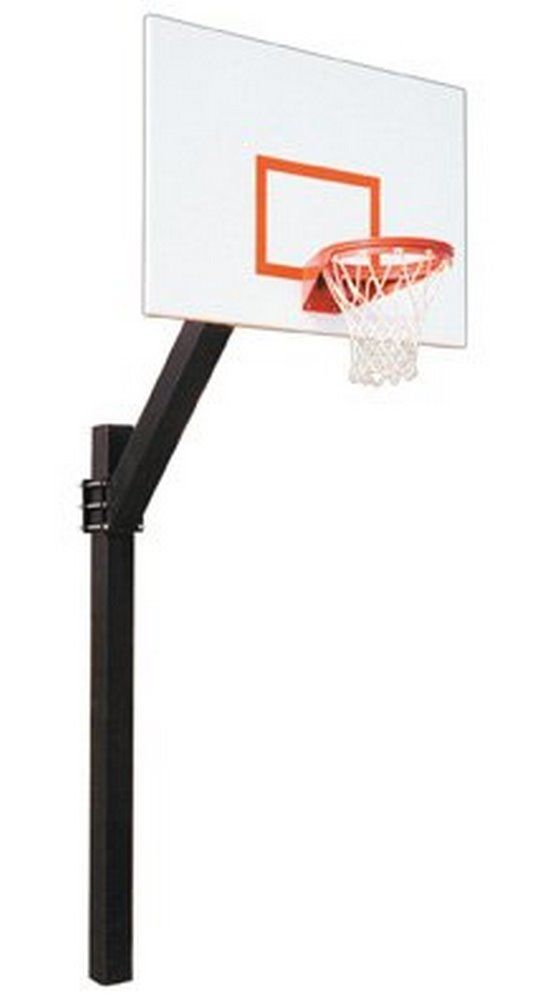 The first one is the cheapest. It is intended for entry-level players. Now manufacturers offer a large selection of colors. A carbonate backboard will provide a good bounce of the ball. An acrylic shield is bought to hold competitions or intense games.
The first one is the cheapest. It is intended for entry-level players. Now manufacturers offer a large selection of colors. A carbonate backboard will provide a good bounce of the ball. An acrylic shield is bought to hold competitions or intense games.
The mobile stand can be moved, so it is suitable for a playground in the country and for those who want to play other games besides basketball
Shields and racks made of tempered glass look solid. They will be appreciated by experienced basketball players
Pay attention to rings
You can buy cheap rings, but I don't recommend doing that. In a year they will deteriorate and you will have to buy new ones. Basketball hoops from Spalding and Royal Fitness are made from quality metal that won't rust in the rain.
The ring must have a springy structure - no rigid attachment to the shield.
According to NBA rules, the ring must be fixed at a distance of about three meters from the ground.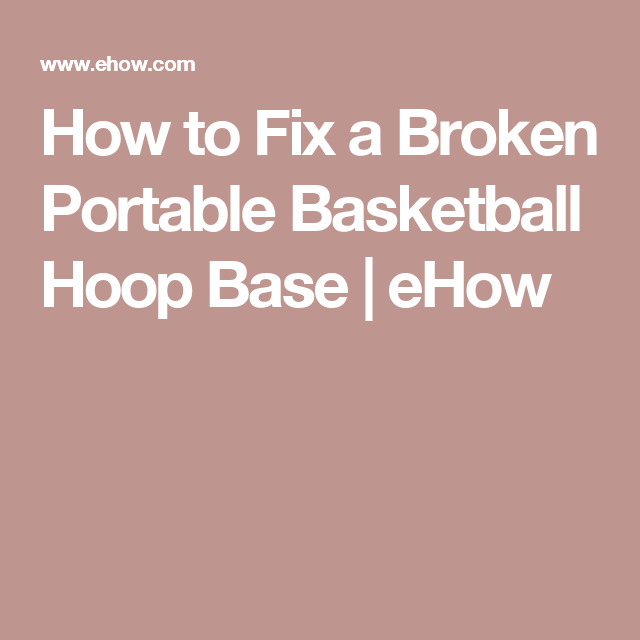 For a game with the participation of younger students, it can be hung lower so that it is not very easy to hit it, but at the same time it is quite possible.
For a game with the participation of younger students, it can be hung lower so that it is not very easy to hit it, but at the same time it is quite possible.
Choose rings made from high quality metal to last for many years. For a game involving adults and teenagers, metal chain rings are suitable. They are distinguished by durability and strength.
Know what types of basketballs exist
Success in the game depends on the basketball.
They are divided by size. Size 7 is for men, 5 for women. Even smaller balls are bought for children. The size 6 ball is suitable for street ball or street basketball where the game is played on half the field.
You also need to take into account where you will play the ball: on the street or in the hall. The street ball has a stronger bounce, it is harder and more wear-resistant, but the indoor ball is more convenient to hold in your hands.
It is important to pay attention to the composition of the basketball.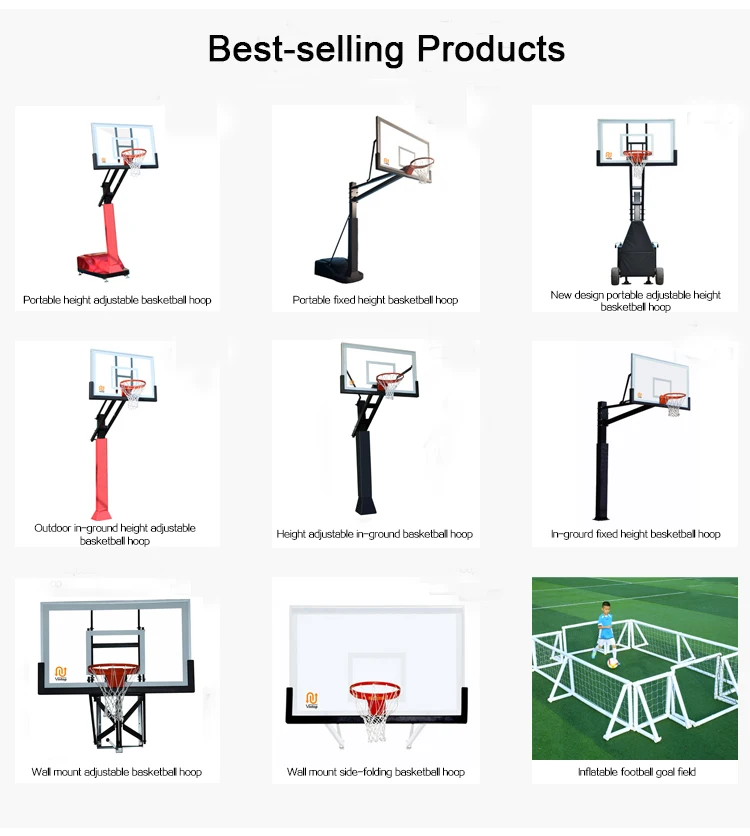 Well-known companies use complex polymer compositions for its production. The more expensive the ball, the more complex the polymer composition. The quality of the material determines how comfortable it will be for the players to hold the ball, what kind of rebound it has from the floor and from the bow of the ring.
Well-known companies use complex polymer compositions for its production. The more expensive the ball, the more complex the polymer composition. The quality of the material determines how comfortable it will be for the players to hold the ball, what kind of rebound it has from the floor and from the bow of the ring.
Another important nuance: do not forget to purchase a pump with any needle.
If you want the ball to have good grip and bounce well, you need to choose polymer models from world famous manufacturers
Proper care
Professional athletes are ready to play in any weather, but amateurs are better off not following their example. If you don't properly store, use and care for your basketball arsenal, its lifespan will be shortened. Humidity will ruin the ball and all equipment, so you can’t leave them outside during rain and snow.
Balls should be stored only in a dry and ventilated room at a temperature of 10 to 20 °C.
Before winter storage, water must be poured out of the base of the mobile rack, and then removed from the street. If you don't feel like doing this every time, fill the rack with sand. Then it will not need to be constantly moved. Basketball stands from Royal Fitness can be left outside in the winter.
Points to remember when setting up a basketball court
- The area needs to be determined. The classic version - 28 × 15 meters - is not suitable for everyone. For a dacha, a 5 × 5 meter area will be enough if you want to train three-point shots.
- Don't forget the markup. It should be in a contrasting color. Bright colors will interest children and cheer them up.
- It is necessary to install a protective net so as not to constantly run after the ball to the other end of the area.
- If the shield is stable, then it is safe. A mobile stand from a well-known manufacturer will also not let you down, and it can be moved around the site.
